What is Average Order Value and How to Grow it? 13 Strategies for eCommerce Stores

There are mainly two ways to generate more revenue for your eCommerce store – increasing the number of customers or selling more to existing ones.
The second option is easier as you don’t have to spend extra money to bring in new customers to your site, helping you reduce the cost of customer acquisition.
But how do you do it?
By increasing the average order value of customers.
Let’s first start with an understanding of the average order value.
What is the average order value (AOV)? – Meaning & Definition
Simply put, average order value (AOV) is a metric that calculates the average amount of money each customer spends per order.
Now this average order value (AOV) can vary from store to store depending on your products and pricing.
If you want to know the AOV of your store, simply follow the given below formula.
How to Calculate AOV for eCommerce?
To calculate the average order value of your eCommerce store, you need to divide total revenue by the number of orders placed. To put it in a formula, it would look like this 👇
Average Order Value = Total Revenue/Number of Orders Placed

Let’s understand this better with an example.
Suppose, you are selling products worth $10,000 per month from your site and you are generating this revenue from 50 customers. In this case, your average order value would be $200.
Other than doing manual calculations, you can also check your store’s average order value by having a look at your Google Analytics 4 (GA4) or the Shopify dashboard.
Here’s how to do it in GA4:

As you can see in the screenshot, you can find the average order value (now renamed as “average purchase revenue per user”) by going to the reports tab, then clicking on “Monetization” and then “Overview.”
There you will see a screen that will show you the graph of average purchase revenue per user.
However, if you want to check your store’s average order value in Shopify, here’s how you can do it –
Go to the “Analytics” section (on the left), then click on “Dashboard” and there you will see a block of “Average Order Value” as shown below in the screenshot.
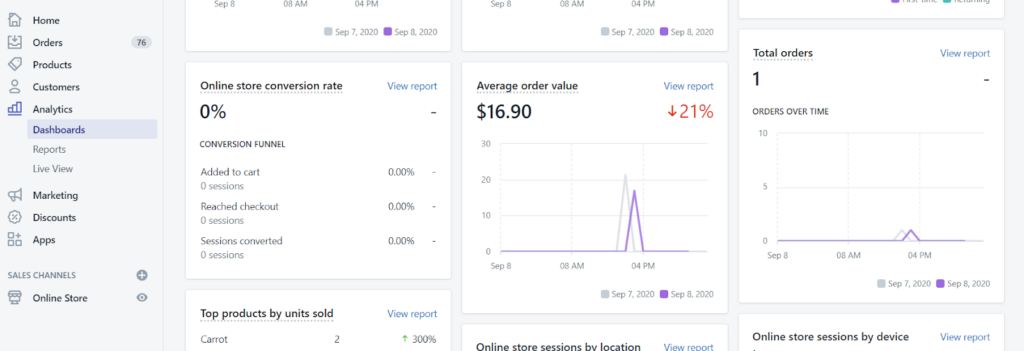
Ok, so now you know how to check your store’s average order value, you may feel curious to know if the number that you have is good enough or not.
Well, we have got you covered!
Let’s get an idea about the industry benchmark of average order value in eCommerce.
What is a Good Average Order Value?
The average order value in eCommerce depends on many factors including the industry you are in, the products you sell, brand positioning, and your pricing.
Here’s the data that you can look up to to get an idea of AOV across categories. Take this as a reference to determine if your store is performing well compared to your competitors.
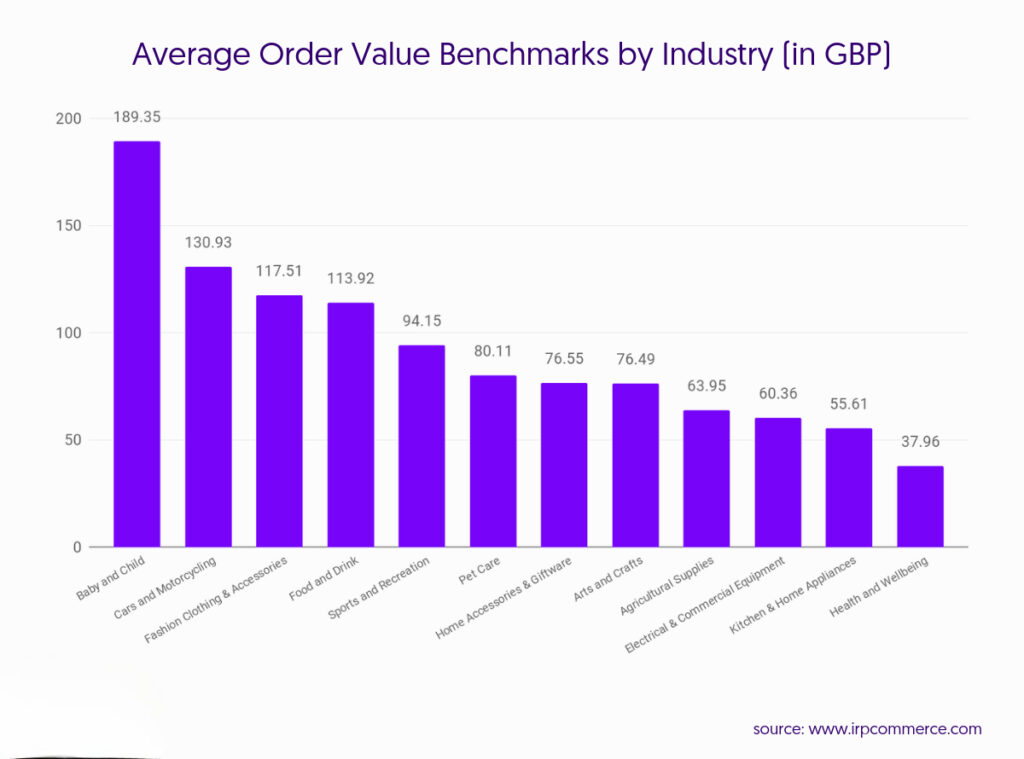
As you can see in the chart, the highest AOV is £189.35 for the baby and child categories while health and wellbeing has the lowest of £37.96.
But here’s the thing – there are many dimensions to this average order value.
If you want to craft amazing marketing strategies, looking at various angles of average order value (AOV) is important.
Let’s explore the four main dimensions of AOV.
4 Dimensions of Average Order Value (AOV)
As discussed earlier, looking at the various aspects of average order value can help you uncover the true potential of your eCommerce business growth as you get to know the gist of customer behaviour.
So, let’s have a quick look at each of these dimensions.
| Dimension | How does it Matter? |
| Product category AOV | Looking at which category of your store (for example, T-shirts, if you are a fashion store) brings the most revenue per order can help you plan your marketing activities accordingly. |
| Brand AOV | If you are an eCommerce retailer, you can also have a look at the brand that most people buy. For example, 3 out of 4 people buy at least something from a specific brand. This tells you which brand to focus on while upselling and cross-selling your products to increase your average order value. |
| Customer Segment AOV | If you are targeting a broad range of demographics like men from the USA and UK, age ranging between 30 to 50 – you can also have a look at the segment that spends the highest per order. You can offer them personalised recommendations and value-additional services like express delivery and additional discounts to increase average order value. |
| Single Product AOV | Lastly, you can check which product is driving the most revenue to your store. While running campaigns, you can focus on that particular product to maintain the cost-effectiveness of your budget while increasing AOV. |
But do you know that there are many factors that affect these dimensions? Let’s find out which are these factors and what you can do about them!
7 Factors Affecting AOV in eCommerce
Let’s say your average order value is $200 (referring to the example given in the calculation section). Many factors influence this amount as listed below in the list –
1. Category
The kind of products and categories you cater play a major role in defining your average order value (AOV).
If you are selling clothes, the average order value for eCommerce fashion stores is definitely going to be lower than the one that sells luxurious watches or exclusive paintings online.
2. Bundling Offers
Other than the product you sell, the way you craft your bundle offerings also impacts your average order value to a great extent.
So let’s say, you have created two bundles to increase your current AOV of $100.
Bundle 1:
Jacket + T-shirt + Jeans
Original Total Price (if purchased separately): $190
Bundle Price: $150 (a $40 discount)
Bundle 2:
Products: Jacket + T-shirt + Jeans + Accessories (scarf or belt)
Original Total Price (if purchased separately): $220
Bundle Price: $200 (a $20 discount)
Both of these bundles will attract a different kind of audience and also impact how well you are able to increase your average order value (AOV). Here’s a chart for you to have a quick comparison.
| Bundle Type | Price | Discount | Perceived Value | Effect on AOV | Customer Appeal |
| Discounted Bundle | $150 | $40 off | High (due to significant discount) | Moderate AOV increase ($100 → $150) | Broad appeal; increases volume |
| Premium Bundle | $200 | $20 off | High (more items included) | Higher AOV increase ($100 → $200) | Niche appeal; caters to premium buyers |
3. Pricing
Moving next, your pricing and positioning in the market also matter when evaluating the average order value.
- Is your pricing targeting mass or premium?
- Are you selling just the products or a bigger picture?
- Are you able to differentiate your brand well (if you are selling at a premium price)?
When all of these are combined, it influences your average order value to a great extent.
4. Discounts and offers
One more aspect that’s closely related to pricing and impacts average order value is the discounts and deals.
When your deals for upselling, cross-selling and bundles are exciting enough – it motivates your customers to go for the deal without thinking much about it, increasing your AOV effortlessly.
5. Free Shipping Thresholds
As more and more customers expect free shipping when they place an order, your store’s minimum free shipping thresholds define how much a customer will spend in one go.
If your free shipping threshold is $100, most customers will try to order a minimum of that amount so that they don’t have to pay extra – directly impacting the store’s AOV.
6. Seasonal Products
As there are many dimensions to AOV (discussed above in the chart), if you are selling seasonal products your average order value may go high during peak season.
Let’s say your store specialises in winter care products, you may see a hike in AOV during winter while almost negligible sales during other seasons.
7. Store UI/UX
Lastly, your online store is the first impression your customers get of your brand.
Effective branding of your store plus having offers and bundles placed at the right placements improve the chances of customers opting for the offers – ultimately increasing your average order value.
When you work on these aspects that determine the average order value of your store, you can modify them to get higher AOV.
And it’s a no-brainer that the higher the AOV, the better the benefits!
4 Major Benefits of Increasing AOV

Having a higher AOV is like extending your store’s runway, it gives you more room to take off smoothly and reach new heights, providing the required flexibility to try new strategies without running out of space.
Let’s have a look at each of these benefits quickly.
- Better Profits and Revenue
The first and one of the most obvious benefits you will see when your AOV goes high is the cash in your accounts without spending more on customer acquisition costs. It’s like flowing more water in the same river without any additional effort.
- Good ROI
If you are running ad campaigns to bring more customers to your site, higher AOV makes sure that you are getting a good return on investments (ROI) of your spending.
Not just the ad campaigns, but if you are investing in other marketing activities like SEO, email marketing, content marketing, influencer marketing, and text messages marketing; you can justify all the spending as soon as your average order value increases.
- Higher Customer Lifetime Value
Now as soon as your profits and ROI become better, you get a window to increase your customer lifetime value (CLV). The higher a customer spends per order, the better your CLV.
- Better Insights about Product and Pricing Strategies
Last but not least, when you successfully increase your customer lifetime value, you can get a better understanding and insights about what customers prefer and their buying behaviour.
What’s even better? With these new insights, you can plan your product inventory better while redefining your marketing messaging to align with customer behaviour.
Now the question arises, how do you make all of these possible?
By executing the strategies to increase the average order value of your eCommerce store.
So let’s deep dive into the practical ways without any further ado.
13 Effective Strategies to Increase Average Order Value for eCommerce Stores
So after reading all the benefits that higher average order value can bring you, if you are ready to explore how you can achieve it, follow these three simple yet effective strategies to increase your average order value.
1. Utilise Free Shipping Thresholds
Do you know that over half of Americans add more items to their cart just to meet the free shipping threshold?
You can use this customer behaviour to increase the average order value of your store.
So let’s say, your current AOV is $100 and you want to increase by 30%, you can set your free shipping threshold to $130 for customers to avail free shipping benefit.
Decathlon has executed this strategy well with eye-catching and interactive animation that drives customers’ attention to the free shipping offering, ultimately increasing average order value.

However, if you are in an industry where you can customise your product offerings based on the problems your customers are facing.
It’s a clear opportunity for you to increase AOV.
Let’s find out how!
2. Use Product Quizzes at Checkout Page
Well, we all have seen this kind of product quiz on eCommerce stores, there’s nothing new to it. Many eCommerce businesses have done this before but do you know you can use the same strategy to specifically increase the AOV of your store?
Yes, it’s possible!
So let’s say a customer has added a shampoo for dry hair to their cart. As soon as they come to the checkout page, you can encourage them to take a quiz to learn more about their hair type and sell a higher-value product accordingly.
Now, let’s say while understanding and customising products for your customers, you see a pattern. A pattern where customers buy a few products together.
And with this insight, you can create bundles and packages to increase the average order value of your store.
The way of creating bundles and packages.
3. Create Bundle & Packages
Offering bundles and packages is quite a popular way to increase average order value and there’s no wonder why!
When a customer sees that they are getting more items at a discounted rate, they will feel a great sense of saving while they still make more money with that order.
But how do you create bundles and packages that win the hearts of customers?
By simply curating the products that customers often buy together or make their lives easier.
There are many types of bundles that you can create such as –
- Pure bundling – Let customers buy products in a bundle only, not separately.
- Necessity bundles – Offers all the essential products in one bundle
- Same product bundle – Let customers buy the same products at a discounted price.
- Mixed product bundling – Let customers bundle different products to buy as a bundle.
- Buy one get one bundle – Offers another product as a free or at a discounted price.
- Leader bundling – Offers one product as a hero or “leader” and others as complementary.
As you can see in the below example of GetFPV, they have created a necessity bundle of all the products that a buyer needs to get going in their journey while helping GetFPV to increase average order value.
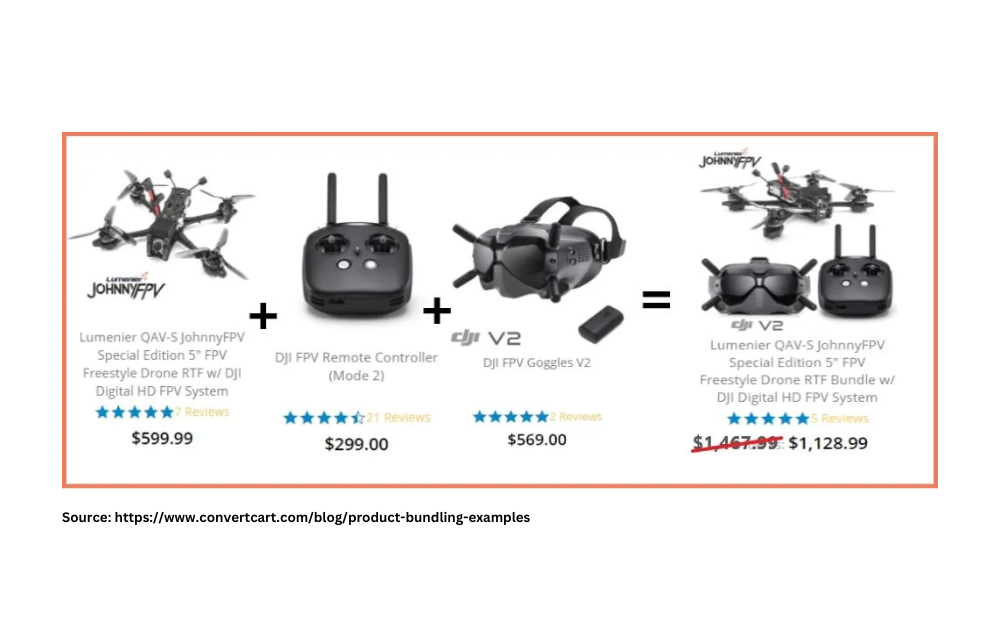
💡Additional Tip:
What you can note here from the example of GetFPV is that it’s important to check off the total price and highlight the discounted price. This helps you create a better-perceived value of the bundle – motivating customers to buy without hesitation while increasing their order value.
But what if you sell only selected items on your site and those can’t be bundled?
In that case, you can upsell and cross-sell your products to increase average order value.
4. Personalized Upselling & Cross-Selling
Once I went to an offline store and the salesman was so convincing that I ended up buying more. I’m sure this must have happened to you too.
That’s the art of upselling and cross-selling!
However, upselling and cross-selling in eCommerce stores can be a little different than in an offline store.
If you wish to sell more products like hotcakes through upselling and cross-selling, showing recommendations and deals on the cart and checkout page is the best option.
Boat Lifestyle, an electronic brand, lets its customers experience upgraded and customised versions of the products by paying a small amount for them.
Here’s what your AirPods look like after engraving the name
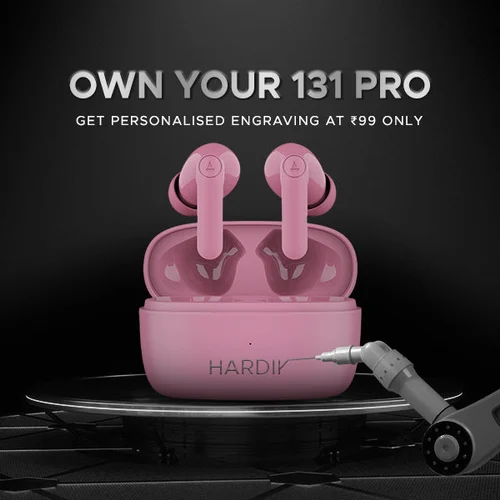
When your customers see that they can get a better experience of the products by paying some extra bucks, it easily opens doors for you to improve average order value.
How can you sweeten the deal even further?
By presenting amazing deals that make people go crazy to buy your products!
5. Craft Amazing Deals
What if you can get two products at the price of one? Or buying two can give you huge discounts on the third product? You will go grab it without thinking twice, right?
The same happens with your customers.
Having offers like Buy One, Get One Free, tiered structured pricing, 20% discount when a customer spends $200, and special occasion (birthdays, anniversaries) discounts encourage buyers to spend more in one go – ultimately increasing your average order value.
Below is an example of a supplement store that has crafted a “buy one get one” offer that motivates customers to spend more.

By implementing customer-centric offers, you are guaranteed to increase the average order value of your eCommerce store – this way your customers also feel a sense of pride and celebration.
Celebration. This reminds me of another way to increase the average order value. Let’s find out what it is.
6. Give Gifts and Other Incentives
Your customers love it if they get pampered when they shop from your store. There are many ways you can make your customers feel pampered, valued, and appreciated to increase average order value.
Think of strategies like giving points every time a customer buys, which they can further use as currency in your store or get a discount of the same amount. Or giving them a surprise gift when they place an order above a specific amount.
This reminds me of my recent purchase from a store that offers free goodies and surprise gifts for higher-order values.
As you can see in the example, when a customer spends over a certain amount, they get free gifts and as they keep adding more products, they get additional discounts for selected products.
The best part? They can see their rewards and progress in a sticky bar – motivating them to keep adding items to their cart. And as they keep adding more to their cart, it only increases their average order value.
This strategy of giving gifts and other incentives is great for D2C brands but what if you deal in the B2B model?
How will you increase the average order value in that case?
By offering volume discounts!
Let’s find out more about it in detail.
7. Provide Volume Discounts
If you are into a business-to-business model, all the strategies mentioned above about increasing average order value may not work as effectively!
But there’s good news and you still have a chance to increase your average order value by implementing tiered discounts, also known as volume discounts.
Volume discounts encourage customers to buy in more quantities to save extra money. The more they buy, the better discounts they get. And who wins in this race?
Both of you – they, buy saving more and you, by increasing the average order value.
The below example is a perfect example of volume discounting with detailed specifications of quantities and how much it would save customers.
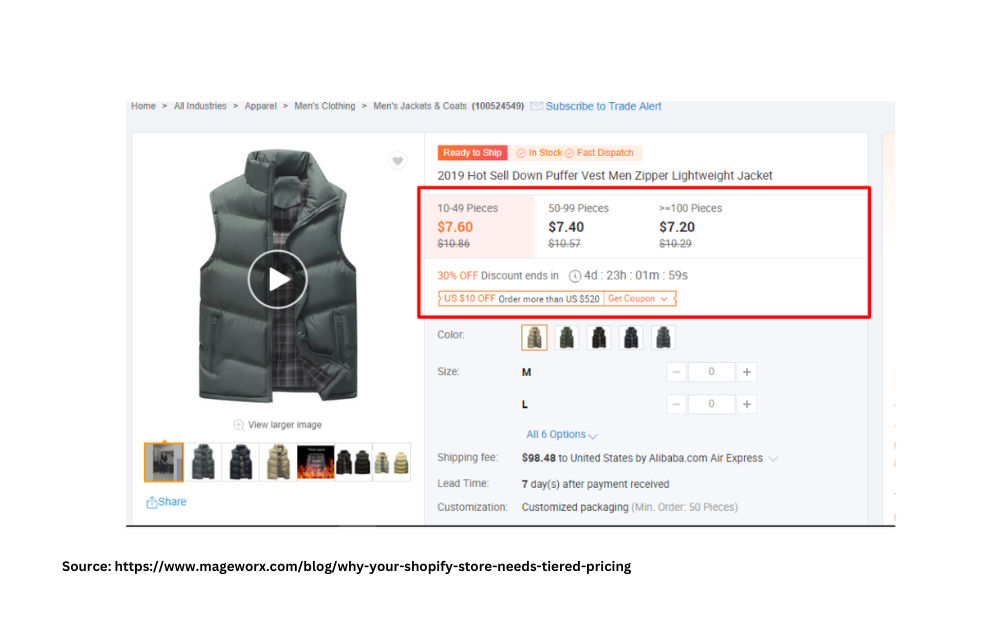
If you carefully look at the example, you will also see that they have included a time-sensitive offer (more on this later) to speed up the purchase process.
8. Offer Value-added Services
Moving next, another way you can increase average order value is by providing value-added services to your customers. It can be as simple as providing them shipping insurance of $5 for free or providing them maintenance services at discounted prices.
To better understand this with an example, let’s have a look at Apple.
When you buy from them, on the checkout page, you will see an “Apple care” service in which they cover accidental damage to the display.
With the price point of Apple, any customer would consider buying protection rather than paying more later, helping the brand increase average order value.
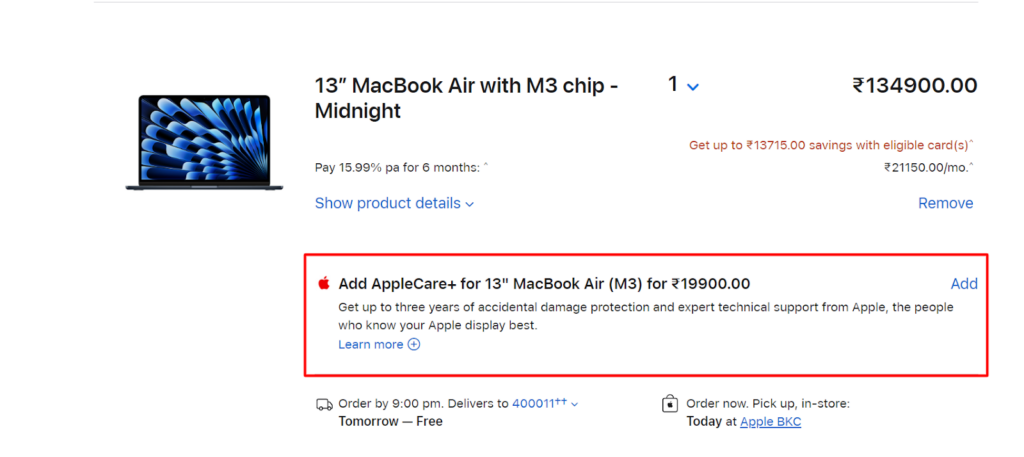
However, if you are not in a business where you can directly offer value-added services, another strategy you can try to increase average order value is by letting them get a vibe and feel of your products.
And this brings to us our next point – leveraging interactive product experience.
9. Leverage Interactive Product Experiences
Has it ever been with you that while exploring and buying products from an eCommerce site, you came across other products and wanted to buy them but as they were new to you, you didn’t buy them?
I’m sure, this would have happened to you at least once.
According to Shopify, products advertised with augmented reality (AR) or virtual reality (VR) content have 94% higher conversion rates than products without that content.
To increase the chances of a higher average order value of your store, you can encourage your customers to try other complementary products virtually at the cart or checkout page.
Here’s an example of one of our clients who incorporated AR/VR technology into their store to enhance the customer experience.
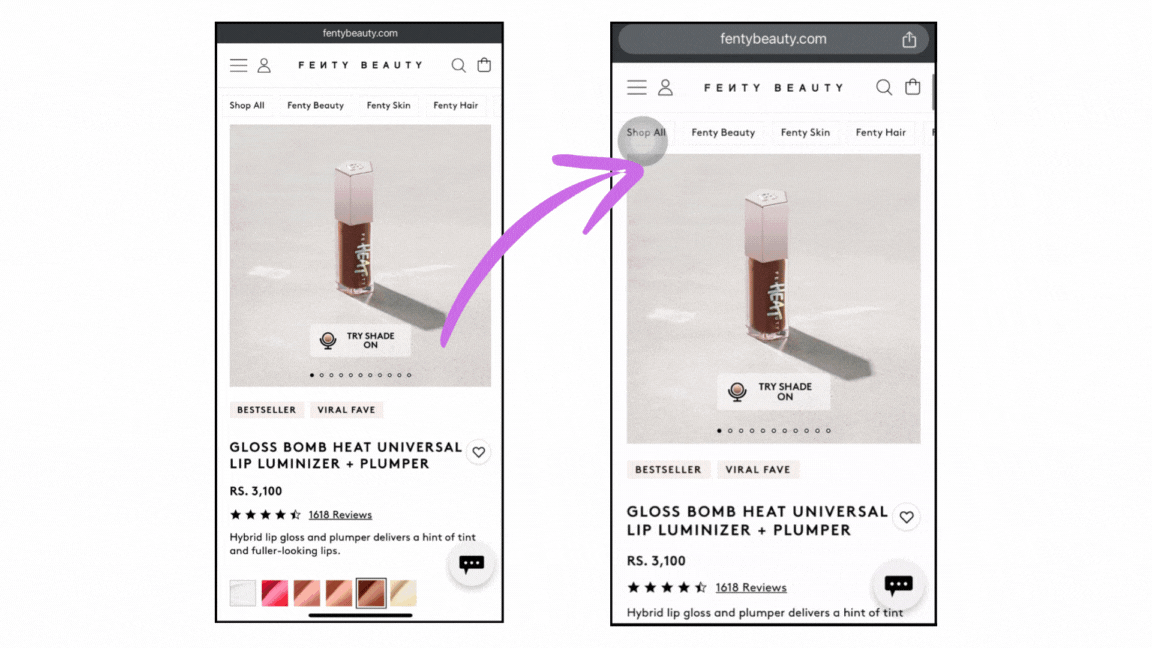
When your customers can try your products before they actually buy them, it definitely increases their likelihood to buy more products in one go – increasing average order value.
With interactive product experience, you can “highlight” the best aspects of your products.
But what if you have to highlight one offer more lucrative than another? How would you do that and how can it help you increase AOV?
With an interesting strategy known as “decoy pricing.”
10. Implement the ‘Decoy” strategy
I’m sure you must have bought a higher-value product at least once in your life because of a decoy pricing strategy but couldn’t recognise it.
So what is a decoy pricing strategy? It is a deliberate effort to make one product look more appealing or desirable by placing less appealing or desirable products just next to it.
As you can see in the example below, the skincare brand has presented three bundles with the one in focus that has more products and is cost high. But what’s the real game here?
They are giving 30% off on that bundle whereas there are no discounts on the other two. Plus, the fewer products in the other two bundles make it look less valuable and desirable.
And to further emphasise the value of a high-value offer (“target”), they highlighted it with a border that makes a customer click on it immediately – helping you increase average order value.
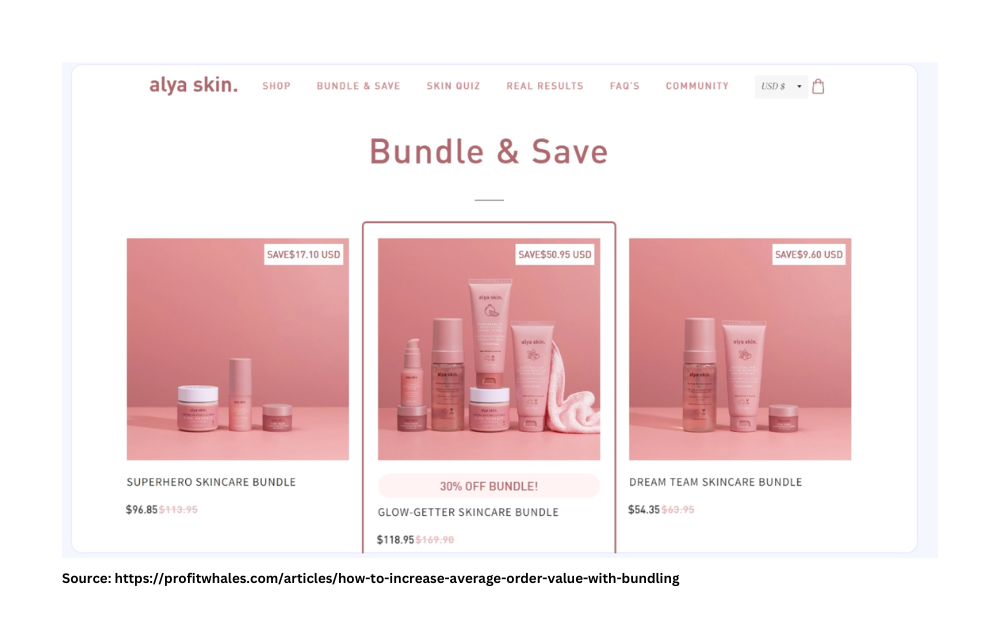
11. Incorporate Time-Sensitive Offers
Imagine you are getting a diamond at $1000 but the offer is valid only for the next ten minutes. What will you do? You will go grab it anyhow, right?
Manier times the actions that we take are purely because of the fear of missing out (FOMO) and you can perfectly use this human behaviour to increase your eCommerce store’s AOV.
So let’s say, you are selling snacks online, you can have a deal where a customer gets 15% off when they add at least $150 worth of snacks in their cart but the discount remains valid only for the next fifteen minutes.
Here’s what it looks like – a copy that conveys the message clearly and a CTA with an emoji that emphasises customers’ urge to complete their high-value order within a few minutes.
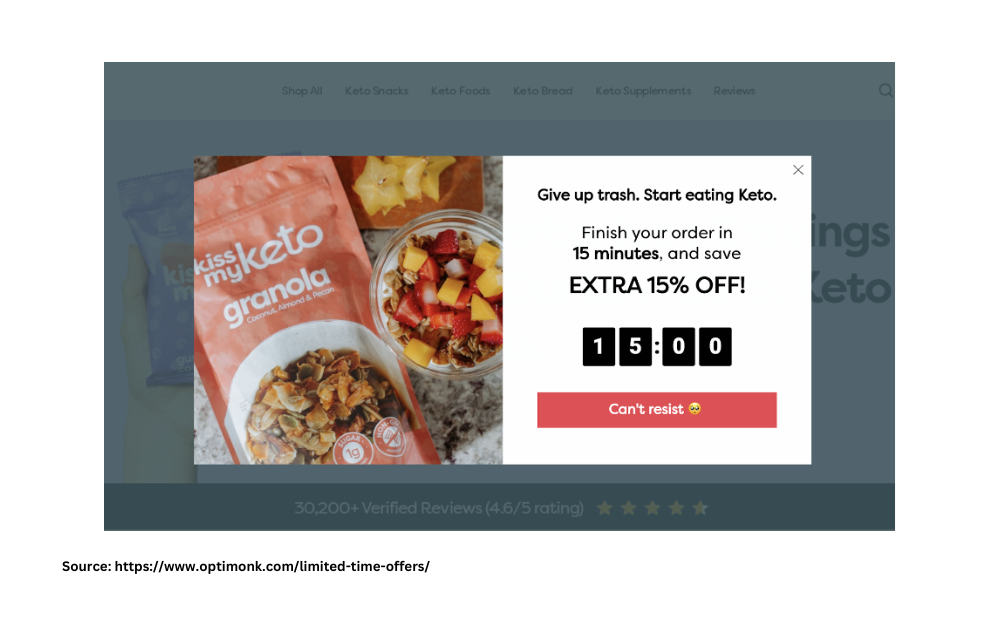
12. Place Trending Products on the Checkout Page
Once I was in a restaurant and the waiter brought a dish for the table next to me and the first thought I had was “I want to have the same dish.”
You see how our decisions are influenced by what other people are buying!
And you can use this psychological trigger by showing them what other people are buying to increase your store’s average order value.
The best place to show trending products is at the checkout page so the customers can buy them with one click without any other distractions.
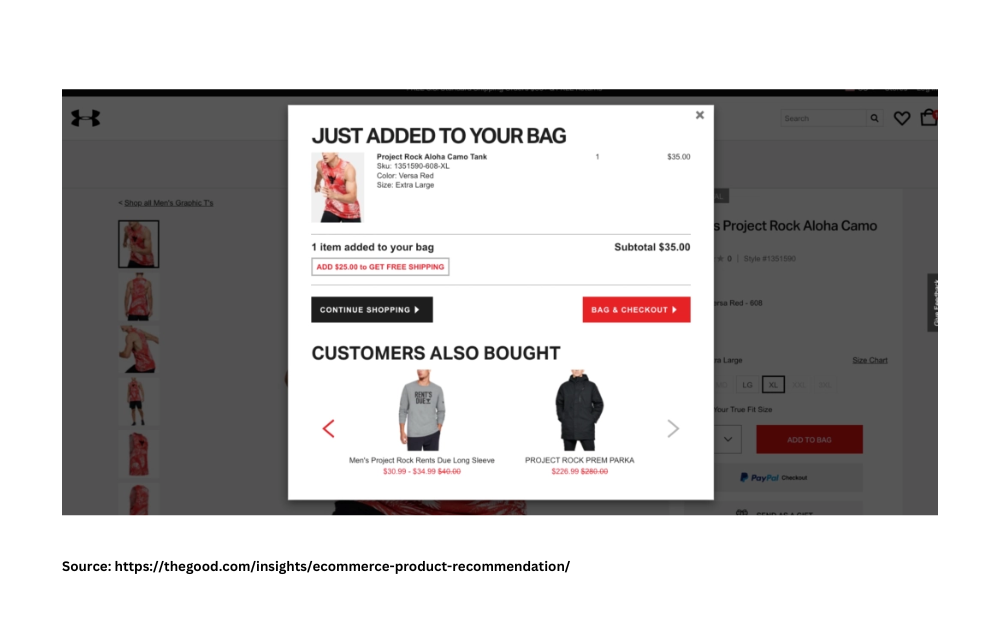
In the above example, a customer gets a trending product recommendation based on what he has already added to the cart, it increases the chances of him getting tempted to buy the same product and thus helps you increase the average order value.
Imagine even if 10% of the people take action with these recommendations, it will help you achieve your AOV goals faster.
13. Create a Customer Loyalty Program
Last but not least, creating a customer loyalty program is another effective strategy to increase your average order value (AOV).
The reason why it works is because of the benefits it offers to the customers just by paying some extra amount for it (if there are charges for loyalty program fees – think of marketplaces like Amazon for this).
However, Calvin Klein is a great example of creating a loyalty program that customers can join for free to get all the additional benefits like –
- Earning points on every dollar spent,
- Getting bigger discounts when they spend more,
- Access to exclusive promotions, and
- Birthday gifts
These benefits are motivating enough for customers to increase their average order value (AOV).

Other than increasing average order value, this strategy also helps them create a base of loyal customers who will keep coming to them again and again.
Increase Your eCommerce AOV with Expert Guidance
With all the knowledge that you have gained with this blog, we hope that you are now ready to execute these strategies in your store to achieve your AOV goals.
Remember, the real power is in executing things, which may take more time and effort than anticipated. The best way to achieve your goals is by hiring an eCommerce marketing agency having a solid experience of how the eCommerce world works.
You can check the results we’ve brought for our clients and get in touch with our team to discuss your requirements today!
FAQs Related To Average Order Value for eCommerce
What is the AOV metric for eCommerce?
AOV stands for average order value in eCommerce. It calculates the average amount a customer is spending per order on your site.
What does a higher AOV mean?
A higher AOV indicates good profitability and ROI of your marketing activities.
How is AOV calculated in Shopify?
In Shopify, AOV gets counted by dividing the number of orders by the gross sales (excluding adjustments) – discounts (excluding adjustments).
Why is my AOV decreasing?
There can be many reasons leading to a decrease in AOV including more sales of lower-priced orders, poor effectiveness of upselling and cross-selling strategies, or too heavy discounts which are not working in your favour.






Post a Comment
Got a question? Have a feedback? Please feel free to leave your ideas, opinions, and questions in the comments section of our post! ❤️